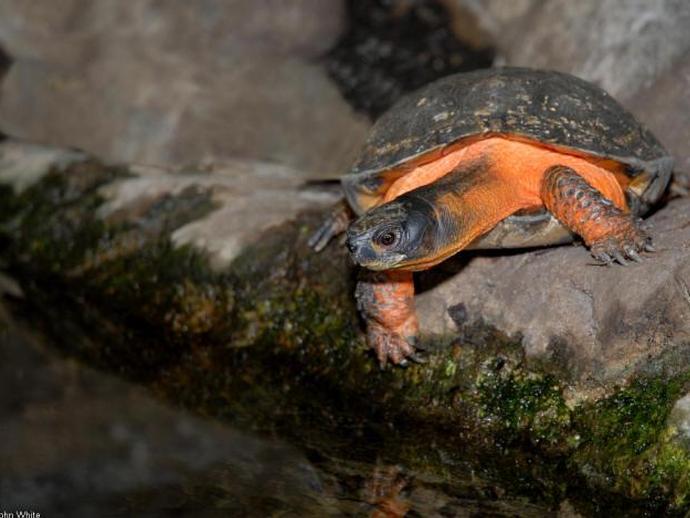February 2, 2021
Ben here with Tuesday's edition of #BenInNature presented by our friends at Carter Bank & Trust!
Here's our pick for Virginia's fourth rarest species of turtle: Glyptemys insculpta, the wood turtle!
The wood turtle can be found in many New England states and parts of southeastern Canada (including Nova Scotia). It's range extends as far west as Minnesota and as far south as northern Virginia, where it can be found in the counties of Clarke, Fairfax, Frederick, Loudoun, Page, Rockingham, Shenandoah, and Warren.
Despite that wide range, their numbers have been in decline for decades due to a combination of factors, including road traffic and habitat destruction. It is also collected illegally for the international pet trade.
Wood turtles live in a variety of habitats, including forested floodplains, fields, wet meadows, and farmland. They're also closely associated with water as they tend to overwinter in or near creeks and streams. They consume a wide variety of prey, and one of the ways that they seek out prey is pretty inventive! Wood turtles have been observed rhythmically tramping about, stomping their front feet about once a second for anywhere between 15 minutes to four hours. These rhythmic vibrations were observed to draw earthworms to the surface, which were then hastily dispatched by the wood turtle!
Wood turtles are pretty speedy (by turtle standards, anyway), and they also have remarkable homing abilities. In one study, a male wood turtle was displaced 1.5 miles after being captured. Once it was released, it returned to its original location within five weeks (and I'm guessing it was pretty ticked off when it returned; I certainly would be).
If you spot a wood turtle in northern Virginia, the best thing to do is leave it alone. However, if you see one crossing the road, you can pull over and help it get to where it's going, assuming it's safe to do so.
Thank you to the Virginia Herpetological Society (www.virginiaherpetologicalsociety.com) for the use of this photo, which was taken by John White.
ABOUT #BenInNature
Social distancing can be difficult, but it presents a great opportunity to become reacquainted with nature. In this series of posts, Administrator of Science Ben Williams ventures outdoors to record a snapshot of the unique sights that can be found in the natural world. New updates are posted Monday - Friday, with previous posts highlighted on the weekends. This series of posts is made possible thanks to the support of VMNH Corporate Partner Carter Bank & Trust (www.cbtcares.com).
NATURE PHOTO IDENTIFICATIONS
If you discover something in nature that you would like help identifying, be sure to message us right here on Facebook with a picture (please include location and date of picture) and we'll have our experts help you identify it!

 Hours & Admissions
Hours & Admissions Directions
Directions

